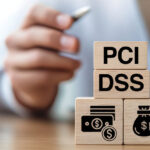Macropayment
Macro payment is the opposite of micropayment and refers to the processing of payments that exceed a certain amount. Depending on the definition, the limit is five or ten euros. Some credit card companies set their own limits for macro payment. For example, Visa or Mastercard only allow payments of 30 euros or more to be processed via the credit card.
The problem of profitability
Most payment methods involve more or less high fixed fees. The smaller the amounts to be paid, the less economical most payment methods therefore become. This problem is even more pronounced in micropayments, but is also present in macro payments. Online merchants are accordingly keen to find a macro payment provider with a favourable cost structure.
Macropayment: The payment methods
There is a wide range of payment methods in the Macro payment sector. These include, for example, the classic payment methods such as payment in advance and on account. Payment by direct debit or direct debit authorization, payment by cash on delivery and credit card are also represented here. Last but not least, Internet payment services such as PayPal have been increasingly pushing their way onto the market for some years now. Payment by invoice continues to enjoy a high reputation. According to a survey by Fittkau & Maaß in 2011, more than half of German-speaking Internet users already use PayPal for their Internet purchases. Macropayment is therefore currently undergoing a major upheaval, moving away from traditional payment methods and toward practical, secure and fast online payment services.
Security with Macropayment
Security is a top priority with Macro payment for both buyers and sellers. It is important to the customers that no one is able to spy on their personal data or bank details. That’s why Macro payment providers are constantly working to develop new procedures and security standards that will help protect customers’ personal data even better. In the event of damage to the ordered goods, customers prefer payment methods that allow them to receive the goods before they have to pay. For sellers, security against misuse of payment methods and minimization of payment defaults are particularly relevant.
Requirements for macro payment providers
Both customers and sellers have high expectations of macro payment providers. Buyers want as much flexibility as possible: their preferred payment method should be free of charge, accepted at many merchants, easy to use, and include the option of cancellation. For sellers, low costs for implementation and transactions are just as important as high acceptance among customers and a fast payment process so that the order cancellation rate does not rise. Macro payment providers must therefore find the greatest possible consensus between the needs of buyers and sellers.








